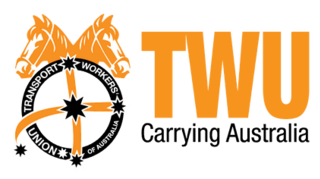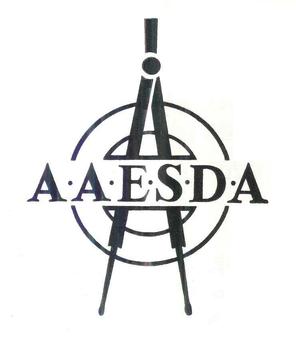Related Research Articles

The Communication Workers Union (CWU) is the main trade union in the United Kingdom for people working for telephone, cable, digital subscriber line (DSL) and postal delivery companies. It has 110,000 members in Royal Mail as well as more in many other communication companies.

The Australian Manufacturing Workers Union (AMWU), or more fully the Automotive, Food, Metals, Engineering, Printing and Kindred Industries Union, is an Australian trade union. The AMWU represents a broad range of workers in the manufacturing sector, as well as associated industries, and is affiliated to the Australian Council of Trade Unions.
The Australian Workers' Union (AWU) is one of Australia's largest and oldest trade unions. It traces its origins to unions founded in the pastoral and mining industries in the late 1880s and it currently has approximately 80,000 members. It has exercised an outsized influence on the Australian Trade Union movement and on the Australian Labor Party throughout its history.

The Queensland Council of Unions (QCU) is a representative, an advocacy group, or peak body, of Queensland trade union organisations, also known as a labour council, in the Queensland, Australia. As of 2020, 26 unions and 13 regional branches were affiliated with the QCU. The QCU represents unions covering around 350,000 Queensland workers. It is affiliated with the Australian Council of Trade Unions (ACTU). Its offices are located in the suburb of South Brisbane, Queensland. As a peak body for the Queensland trade unions, the objective of the QCU is to achieve industrial, social and political justice for Queensland workers. The management structure of the QCU is made up of a committee of management and an executive of representatives comprised from affiliated unions.

The Transport Workers' Union of Australia (TWU) is a trade union with members throughout Australia. It has 5 main branches based in: Australian Capital Territory/New South Wales; Queensland; Victoria/Tasmania; South Australia/Northern Territory; and Western Australia.

The American Postal Workers Union (APWU) is a labor union in the United States. It represents over 200,000 employees and retirees of the United States Postal Service who belong to the Clerk, Maintenance, Motor Vehicle, and Support Services divisions. It also represents approximately 2,000 private-sector mail workers.

The Communication Workers Union of Australia is a trade union in Australia. It is a division of the Communications, Electrical and Plumbing Union of Australia.

The Post Office Engineering Union (POEU) was a trade union in the United Kingdom. It represented engineering staff in the Post Office, mostly working in telecommunications.
The Indian Telecommunications Service,( भारतीय दूरसंचार सेवा) widely known as ITS, and earlier known as 'Telegraph Engineering Service Class I' is one of thee Central Civil Services under Group 'A' of the executive branch of the Government of India. The appointment to this service is done through Combined Engineering Services Exam held every year by Union Public Service Commission (UPSC) of India. The service was created to meet the techno managerial needs of the government in areas related to telecommunications. The Department of Telecommunications (DOT) had been managed for years by the officers of this permanent cadre, called the Indian Telecommunications Service (ITS).The officers of ITS work under restrictions and rules of Central Civil Services (Conduct) rules.
Federated Marine Stewards and Pantrymen's Association of Australasia was an Australian trade union established in 1884, and existing as a federal union from 1909 to 1988. The association represented marine stewards and stewardesses, marine pantrymen and crew attendants. The union operated a closed shop, with all workers employed in the industry members of the union, and operated on a 'no OK card - no job' principle.

The Federated Ironworkers' Association of Australia (FIA) was an Australian trade union which existed between 1911 and 1991. It represented labourers and semi-skilled workers employed in the steel industry and ironworking, and later also the chemical industry.
The Printing and Kindred Industries Union (PKIU) was an Australian trade union which existed between 1966 and 1995. It represented production workers in the printing industry, including compositing, typesetting, letterpress printing, lithographic plate-making, electrotyping, stereotyping and bookbinding, and the manufacture of paper and cardboard products, such as paper bags, envelopes, cardboard boxes and cartons. Approximately half of all members were qualified tradespeople, with the remainder semi-skilled or unskilled workers.

The Association of Draughting Supervisory and Technical Employees (ADSTE), originally known as the Association of Architects, Engineers, Surveyors and Draughtsmen of Australia (AAESDA), was an Australian trade union which existed between 1915 and 1991. It represented white collar and technical-grade employees in both the private sector and the public service.
The Pulp and Paper Workers Federation of Australia (PPWF) was an Australian trade union which existed between 1913 and 1991. The PPWF represented workers in the pulp and paper industry.
The Communications Workers' Union is a trade union representing workers in the postal and telecommunication sectors in Ghana.
The Australian Telephone and Phonogram Officers Association was an Australian trade union representing telephonists, phonogram operators and telex service operators in the Australian Public Service. It existed from 1914 to 1992.
The Australian Postal and Telecommunications Union (APTU) was an Australian trade union which represented a wide range of employees in the postal and telecommunication industries, including postmen, postal and mail officers, delivery drivers, storemen, linesmen and telegram messengers. It was founded in 1925 and merged into the Communication Workers Union of Australia (CWU) in 1992.
References
- 1 2 Huntley, Pat (1980). Inside Australia's Top 100 Unions. Middle Cove, NSW: Ian Huntley (Aust.). pp. 23–26. ISBN 978-0-9598507-4-1 . Retrieved 17 July 2021.
- 1 2 3 "Australian Telecommunications Employees' Association". Australian National University Archives. Retrieved 17 July 2021.
- 1 2 3 Waters, Frank (1978). Murphy, Denis (ed.). Postal Unions & Politics: a History of the Amalgamated Postal Workers' Union of Australia. St Lucia, Queensland: University of Queensland Press. ISBN 0-7022-1198-2.
- ↑ Stein, Susan (1967). Labor Law and Practice in Australia. Bureau of Labor Statistics.
- ↑ Davis, Edward M.; Lansbury, Russell D. (2013). "Worker Participation in Decisions on Technological Change in Australia". In Bamber, Greg J.; Lansbury, Russell D. (eds.). New Technology: International Perspectives on Human Resources and Industrial Relations. London: Unwin Hyman. p. 112. ISBN 9781317816508.
- 1 2 3 Bolton, Brian (1993). Telecommunications Services: Negotiating Structural and Technological Change. Geneva: International Labour Organisation. ISBN 92-2-108263-6.
- ↑ d'Alpuget, Blanche (2010). Hawke: The Early Years. Carlton, Victoria: Melbourne University Press. p. 542. ISBN 9780522860917.
- ↑ Griffiths, Tony (2005). Beautiful Lies: Australia from Menzies to Howard. Kent Town, South Australia: Wakefield Press. p. 185. ISBN 1-86254-590-1.
- ↑ Inglis, Kenneth Stanley (2006). Whose ABC?: The Australian Broadcasting Corporation, 1983-2006. Melbourne: Schwartz Publishing. p. 106. ISBN 1-86395-189-X.
- ↑ Cooper, Dani (23 February 2016). Livelihoods and Liberation Struggles: 30 Years of Australian Worker Solidarity. Union Aid Abroad APHEDA. ISBN 9781925143126.
- ↑ Gibson, Lisanne; Besley, Joanna (2004). Monumental Queensland: Signposts on a Cultural Landscape. St Lucia, Queensland: University of Queensland Press. p. 138. ISBN 0-7022-3465-6.
- ↑ Veal, AJ; Darcy, Simon; Lynch, Rob (2013). Australian Leisure. Frenchs Forest, New South Wales: Pearson Australia. p. 82. ISBN 9781486009350.
- ↑ Foreign Labor Trends:Australia. Bureau of International Labor Affairs. 1992. p. 15.
- ↑ "Australian Postal Electricians Union (1912 - 1943)". Australian Trade Union Archives. Retrieved 17 July 2021.